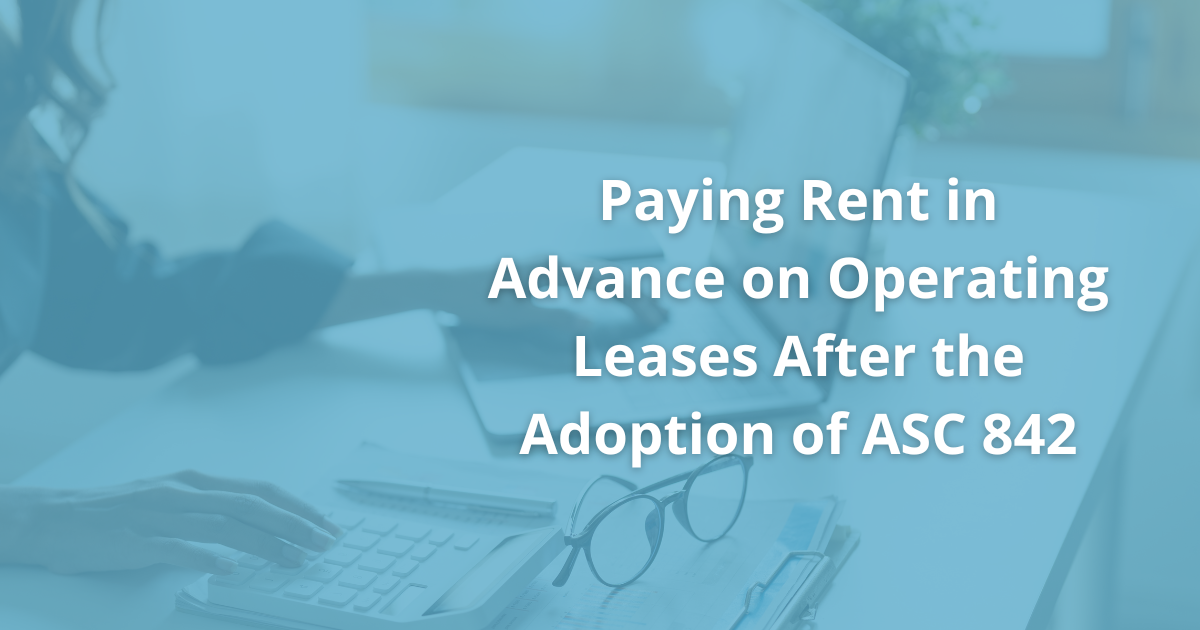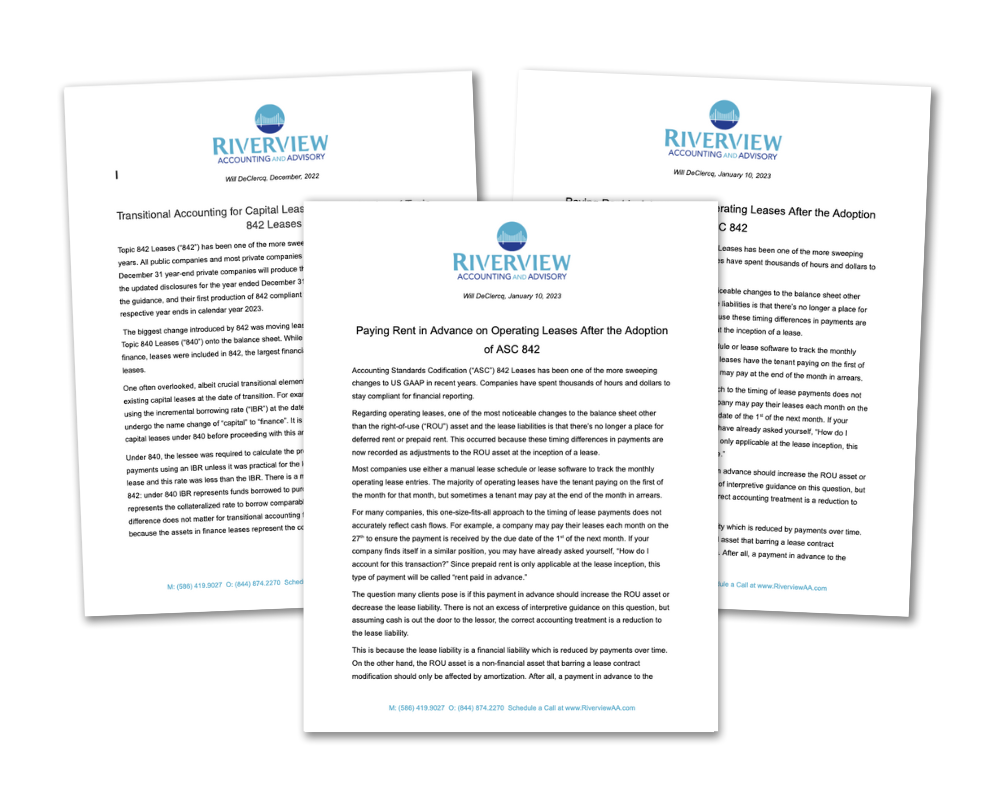Paying Rent in Advance on Operating Leases After the Adoption of ASC 842

Accounting Standards Codification (“ASC”) 842 Leases has been one of the more sweeping changes to US GAAP in recent years. Companies have spent thousands of hours and dollars to stay compliant for financial reporting.
Regarding operating leases, one of the most noticeable changes to the balance sheet other than the right-of-use (“ROU”) asset and the lease liabilities is that there’s no longer a place for deferred rent or prepaid rent. This occurred because these timing differences in payments are now recorded as adjustments to the ROU asset at the inception of a lease.
Most companies use either a manual lease schedule or lease software to track the monthly operating lease entries. The majority of operating leases have the tenant paying on the first of the month for that month, but sometimes a tenant may pay at the end of the month in arrears.
For many companies, this one-size-fits-all approach to the timing of lease payments does not accurately reflect cash flows. For example, a company may pay their leases each month on the 27th to ensure the payment is received by the due date of the 1st of the next month. If your company finds itself in a similar position, you may have already asked yourself, “How do I account for this transaction?” Since prepaid rent is only applicable at the lease inception, this type of payment will be called “rent paid in advance.”
The question many clients pose is if this payment in advance should increase the ROU asset or decrease the lease liability. There is not an excess of interpretive guidance on this question, but assuming cash is out the door to the lessor, the correct accounting treatment is a reduction to the lease liability.
This is because the lease liability is a financial liability which is reduced by payments over time. On the other hand, the ROU asset is a non-financial asset that barring a lease contract modification should only be affected by amortization. After all, a payment in advance to the lessor does not somehow enhance or give the company additional benefit from the right to control the asset. Therefore, the logical solution is to apply the payment against the lease liability. In fact, the definition of a lease liability per the ASC 842 Glossary at 842-10-20 is:
“A lessee’s obligation to make the lease payments arising from a lease, measured on a discounted basis.”
As an example, if a lessee made a payment in advance of $32,709 in a month with accreted interest of $2,963, the entry would be as follows:
Lease liability: $32,709
Lease expense: $2,963
Cash: $32,709
Lease liability: $2,963
It should be noted that this treatment will create a timing difference in expense as at the time of the rent paid in advance only the accreted interest portion of the lease expense will be recorded. This expense will be trued-up when the portion of the lease accounting entry to amortize the ROU asset is recorded.
ASC 842 Leases is a complex portion of US GAAP. This article may help clarify a specific situation that could arise when cash is paid in advance for a lease payment. It is always recommended to consult with the company’s accounting firm when dealing with uncertain transactions.
Download The Article

